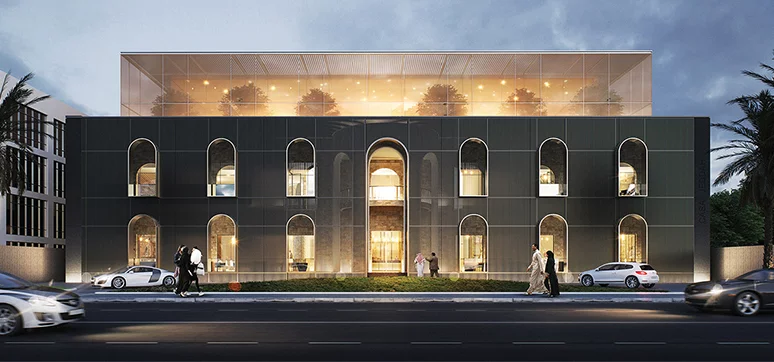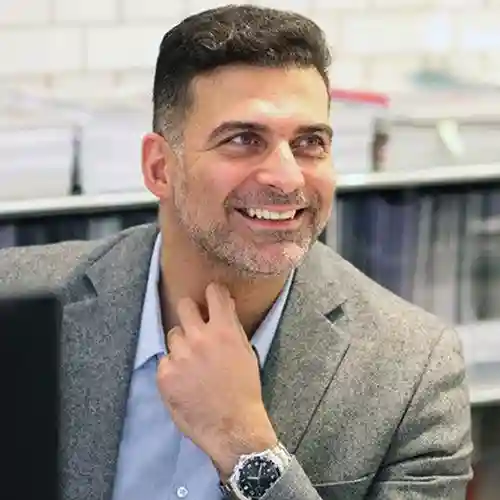In conversation with the team of Window & Façade Magazine, Firas Hnoosh from Nordic Office Architects talked about his architectural journey, his USPs, the status of the façade industry, and the future of the architectural segment in the Middle East. Here are the excerpts…
What inspired you to become an architect? How is your journey so far since you started your career?
I have been interested in architecture since I was a little boy because of my uncle who is an architect. Every time we visited, I would sneak into his studio to admire the cardboard models with miniature figures and play with the drawing equipment. The idea of creating buildings for people fascinated me. During my first semester in architecture school, I was confused and almost quit if it was not for architecture books that enticed me to stay and learn more about architecture. My journey has been very colourful, full of surprises, often nothing went according to plan, but that is what made it so rich. I got to study in three different countries, practice in six countries around the globe and make many friends along the way.
You are a big name in the Middle East’s Architectural field. What is your key success mantra and USP?

It is an honour to be recognised, though I never pursued it. I hope I can live up to this recognition. Our profession is very demanding. A key to success is structure and organisation. If you provide the right systems and structure your team the right way, put the right people in the right position with clear roles and remits, you would then have a successful team and you will produce successful projects. This frees you up to focus more on the creative process and push your design agenda.
As to our USP, we advocate and promote a design approach that creates holistic architecture by designing buildings as a response to their context in its multiple facets, urban, social, cultural and environmental. Our approach aims to create spaces and buildings that are inclusive, of-their place and -time and expressive of their brief and client aspirations.
Could you please tell us about some of your major projects?
I have worked on many projects, but only a few I value in my career and these are mainly built projects or under construction. Early in my career, I worked on the design of Villa M2 in Malmo, Sweden – a minimalist design that taught me a lot and won recognition. In London, I am grateful to have two projects built, both of them high rises: Manhattan Loft Gardens and The Lexicon. In the UAE, I have the Abu Dhabi Cruise Terminal at Mina Zayed, built in 2015/16. The under construction projects, I have the Movenpick Resort in Al Marjan Island in Ras Al Khaimah, Al Khan Palace Hotel and Resort in Sharjah and the large Basaksehir Hospital in Istanbul, Turkey.
What future opportunities and trends do you see in the architectural segment in the Middle East?
I think modern architecture in the Middle East is yet to make a major evolution. Middle Eastern architecture is still exploring its true contemporary identity, it has some way to go to adopt modern building technology at a large scale and also some way to go in integrating and adopting sustainability into contemporary architecture and building design. These, in my view, are the key areas that present opportunities in our field.
According to you, where is the architectural segment heading in the Middle East?

I believe there will be more focus on sustainability in the future, for both environmental and economic reasons. I also believe and hope that gradually Middle Eastern architects will move away from importing foreign designs that do not relate to their climate, culture, and place.
Could you please tell us about the latest façade and cladding technologies and materials available in the UAE market and those you used in your project?
One of the most interesting cases is the use of carbon fibre elements in glazed façades. In the Abu Dhabi Cruise Terminal project, we used carbon fibre vertical fins to serve as lateral loading support for an 8-meter high glass façade – replacing an otherwise very heavy glass or steel fins – and providing a very slim profile. I think this innovation in materials is very interesting and should be explored more.
Could you please brief on the technological benefits of the well-managed Façades?
Needless to say that air and water-tightness are paramount to the success and function of any building envelope. If designed and built in the right way, façades can save energy, block excessive solar heat and moderate the internal climate. They can also provide opportunities for natural ventilation if designed intelligently.
What are your views on the future of façade and fenestration technologies as well as materials?
I think we will see lighter weight materials to be used in façade construction. Breathing are another area where façades can reduce reliance on mechanical systems to help moderate the indoor climate through integrated ventilation features that can be automated using AI. Last but not least, I would be very interested to see the application of Artificial Intelligence, or AI, in façade design and fabrication and the impact it would have on building performance, user comfort, and architectural aesthetics.
How do you go about choosing the material of the façade and cladding?
There are many elements to consider. The immediate and wider context is of one the key aspects where we study local traditional materials being used, the dominant colour palette, the climate of the city where we build is another element as well as the function of the building and its desired performance among other things. Last but not least, is the desired aesthetic and architectural expression that conveys our design intent.
As a well-known architect, what sustainability mean to you and how do you ensure the sustainability aspects of your projects?

I believe architects and building design professionals have an obligation to educate their clients about sustainability. We need to demonstrate to them how tackling this challenge can help them make more money in the medium to long run with the added – yet essential – advantage of reducing our impact on the environment and helping the local economy in reducing pressure on its infrastructure. At the building level, as part of our design process, we adopt two environmental design strategies, passive and active, to reduce a building’s carbon footprint and energy needs.
Passive strategies are adopted in the initial concept stage to have an enduring impact on reducing the building’s carbon footprint and its energy loads. Its impact is not perceived directly, hence it is called passive. Passive strategies include optimising the building’s massing, orientation, façade design, materials, shading devices and solid-to-glazed ratios among other things. It is a one-off capital investment that has an enduring positive impact in reducing solar heat gain, associated cooling and energy loads, increasing thermal comfort in and around the building and providing shade in public spaces.
Active strategies are technologies that are included in the building services and incur an additional capital investment as well as some operational maintenance costs, which are offset over the medium and long term of the building’s life. These include greywater recycling, water flow-reducing taps and fixtures, sensors that manage lighting consumption based on occupancy, temperature and humidity sensors that manage air conditioning supply and ventilation. Systems that manage the use of elevators in the most efficient way to minimise the number of elevator rides and escalator sensors that control operation only when required. Furthermore, we now have access to power generation on-site using photovoltaic panels and wind turbines installed within the building to generate part of the building’s energy requirements.
Architectural hardware plays a very important role in any project. How do you go about selecting the right door and window hardware for your projects?
Architectural hardware should align with the overall design intent of the building and support the design concept in terms of its form and finishes. Door handles, sanitary ware, and lighting fixtures all have to relate to each other and align with the design of the building.
What is your advice for young and upcoming architects?
Be adventurous in pursuing your passion. I highly recommend a lot of travel to explore what other architects – past and present – have built and not rely on the internet and Pinterest for educating yourself. More importantly, diversify your career and education, study abroad if you can or take a semester at a foreign university when possible. Push yourself outside your comfort zone by using your early career years to work for innovative practices with multinational staff to expose yourself to as much diversity and fresh ideas as possible. Later on, you will appreciate the vast knowledge and cultural capital you have accumulated and the network of people you have created which will undoubtedly shape your career and work.














